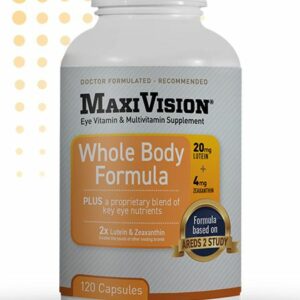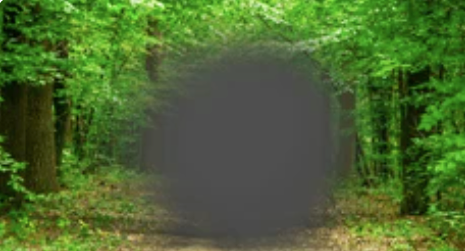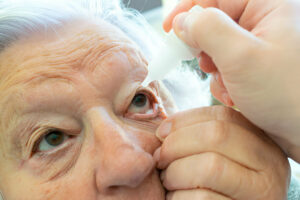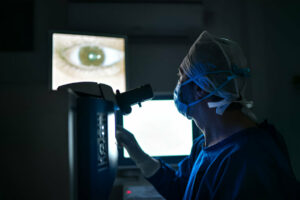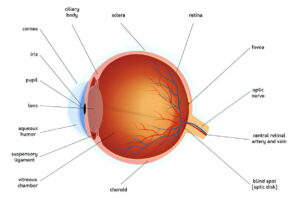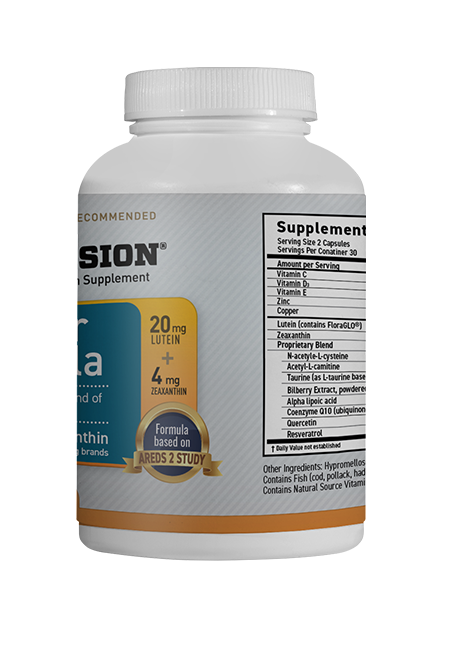Cholesterol has earned itself a bad rep for increasing heart disease risk, but it can also have adverse effects on your eyes. Yellowish patches known as xanthelasma could be an indicator that your cholesterol levels have become elevated in your blood.
A stye occurs on the eyelid when oil glands become blocked and bacteria proliferates rapidly, creating swollen bumps which cause discomfort and can impair vision. Unlike pimples, which generally heal themselves without cause or discomfort, stye can interfere with vision as well as cause discomfort.
Chalazion
A chalazion occurs when one or more meibomian glands – also known as meibomian glands – become blocked, producing oily fluid to lubricate your eyes. They have tiny pin-point openings near the base of eyelashes. When one becomes blocked it can cause the eyelid to swell and become tender or red and sometimes drain a thick mucoid discharge; A chalazion usually does not hurt but may feel firm like nodule on eyelid; sometimes mistaken for styes which require treatment with antibiotic eye drops/ointments/warm compresses for effective results.
If a chalazion does not respond to conservative treatments, a doctor can surgically remove it in a minor procedure using local anesthesia and incising the lump on the inside of eyelid. When done, draining can take place afterwards to drain any leftover fluid that accumulates underneath it. On rare occasions it may recur after it heals – in such an instance contact your health care provider as soon as you notice an increase in lump size or any sign of eyelash loss on affected eyelids.
These bumps tend to develop more often in those suffering from chronic skin conditions like rosacea or blepharitis, or when oil glands become irritated from foreign bodies, contact lenses or eye makeup causing irritation of oil glands. If symptoms recur, proper treatment usually works well enough and most will clear up eventually.
Stye
A stye is an eyelid oil gland condition known as meibomian glands, which help lubricate eyes. When these meibomian glands become clogged with debris or become infected with Staphylococcus aureus bacteria found commonly on skin surfaces, styes may form either externally (external hordeolum) or internally/under the lid (internal hordeolum). Most often caused by infection with Staphylococcus aureus bacteria and will heal without leaving lasting scarring behind; however if infection continues or worsens and the gland becomes blocked again, cyst or chalazion formation may follow later on.
Most styes resolve either spontaneously or with home treatment. Applying warm compresses (typically using a washcloth or cotton ball) for 10-15 minutes four to five times daily to the affected area can alleviate pressure and promote drainage, while antibiotic eye drops or ointments can be used to control inflammation; medicated hand sanitizer is also beneficial. Occasionally though, one may not respond adequately and an ophthalmologist will need to drain it by making small incisions with needle (lance).
A chalazion, often misinterpreted as a stye, is a chronic eyelid condition caused by clogged oil glands without infection and does not typically produce painful symptoms like an eyelid lump or sense of foreign body in the eyelid. Treatment options range from home care treatments and diet adjustments to doctors’ recommendations such as an eyelid hygiene regime; SingleCare offers discount cards that may help offset costs when purchasing prescriptions.
Hidrocystoma
Hidrocystoma is a common, benign cystic lesion of the skin known as Eccrine Hydrocystoma or simply Eccrine Cyst. It manifests in multiple round, skin coloured to bluish lesions in the eyelid skin which are located anterior to the lash line but do not affect the lid margin; they often appear alone but sometimes multiple lesions may form at once in various locations across the face and follow a chronic course with seasonal variations; often confused with Stye or Chalazion; there is no response to atropine ointment treatments as these lesions recur frequently and there is no response from atropine ointment treatments; atropine ointment treatment is effective against these lesions as there is no response from atropine ointment treatments in these lesions; there are no responses given when treating these lesions, and atropine ointment has no affect upon them; neither atropine nor atropine ointments works on these lesions as there is no response from atropine ointment treatments to provide relief either way or seasonal variations on them due to seasonal variability or chronic course/season variability/variability can result from various sources/various components in any case/ or seasonal variability in this regard; seasonal variability; also associated with seasonal variability associated with seasonal variability as this case! ointments related to repeated episodes due to these recurring over atropine treatment may provide relief or response in terms of response response as per se when applied treatment may offer relief or similar products will work in response when treated effectively with regard.
Histopathologically, they appear as multilocular thin-walled cystic spaces filled with mucinous fluid that stain with periodic acid-Schiff and PAS stain. They are lined by a stratified epithelium composed of cuboidal-to-columnar epithelial cells with moderate pale cytoplasm and small round nuclei; some inner lining cells produce decapitation secretion while myoepithelial cells form peripheral cyst walls.
Sometimes these lesions have pigmented cells with brown cystic fluid. If these lesions exhibit rapid growth rate, evaluation for possible squamous cell carcinoma should be undertaken immediately.
Treatment of hidrocystomas typically entails surgical excision, though chemical destruction with bi- or trichloracetic acid can also be an option, often preferable over mechanical rupture, as it avoids infection as well as recurrence; alternatively blepharoplasty may be utilized. One study showed the efficacy of 20% aluminum chloride hexahydrate in absolute alcohol in treating multiple eccrine hydrocystomas effectively.
Molluscum Contagiosum
Molluscum contagiosum (muh-loo-sem) is a common viral skin infection which results in pearl-shaped or flesh-colored bumps to appear. Though not dangerous and likely to resolve on its own, this infection is highly contagious and spreads easily from person to person – more likely occurring among children and individuals with compromised immune systems.
Molluscum contagiosum is caused by a poxvirus family of viruses known as poxviferae; other members include chickenpox and smallpox viruses. Molluscum can enter through cuts or burns and spread via skin-to-skin contact, touching an infected area directly, shaving over it or scratching at it; even sharing personal items like towels or razors could spread infection further. Rarely, sexual contact could also spread infection of this sort.
Once someone is exposed to the Molluscum virus, symptoms typically appear within two to seven weeks. When symptoms do surface, painless bumps often appear individually or collectively in groups on trunk, face, eyelids and genital area of both children and adults alike. Sometimes they even become red-tinged as immune system defends against infection by fighting the Molluscum virus itself.
Doctors usually diagnose Molluscum Contagiosum by looking at it; if any doubt arises, a sample of the bumps can be taken and examined under a microscope. Most patients don’t need treatment as the bumps usually clear up within a year or two on their own; however, for cosmetic or safety purposes some people opt to have their bumps frozen off or using medications such as Trichloroacetic Acid/Podofilox for adults/Tretinoin/Tazarotene/Cantharidin for children to treat their infected areas.
Xanthelasma
Xanthelasma is a yellowish fat-rich material found underneath the skin that commonly forms clusters around the eyes. While generally harmless and painless, this early sign of atherosclerosis must be addressed through proper diet recommendations as well as medications designed to regulate blood lipids.
It is vitally important to identify and treat metabolic disorders which caused xanthelasma in order to avoid its recurrence, using different treatment methods such as surgical excision, laser therapy or topical trichloroacetic acid. For minimally invasive yet comfortable cluster removal using minimally invasive phlebolysis – an effective technique which boils away extra fatty tissue stored below the skin surface – many patients find the results extremely satisfactory.
Xanthomas can be found both in the eyelids and other parts of the body. They can either be soft and flat or may have tumorous growths that threaten them – these dermal nodules have been associated with high lipidemia levels. They can be caused by various conditions, including thyroid dysfunction, diabetes mellitus and pancreatitis. Other potential triggers include liver disorders such as biliary cirrhosis and familial hypercholesterolemia. Xanthoma palpebrarum, which manifests as yellowish lesions on the eyelids and are easily identified, is the most frequently diagnosed xanthoma type. Other types of xanthoma include palmar xanthoma, which appears as orange-yellow plaques on flexural surfaces of hands and feet; calcareous xanthoma is hard with velvety textures while tendinous xanthoma appears as papules over tendons; all are typically benign but need biopsy confirmation of this fact; additionally some may need monitoring for changes in shape or size.

